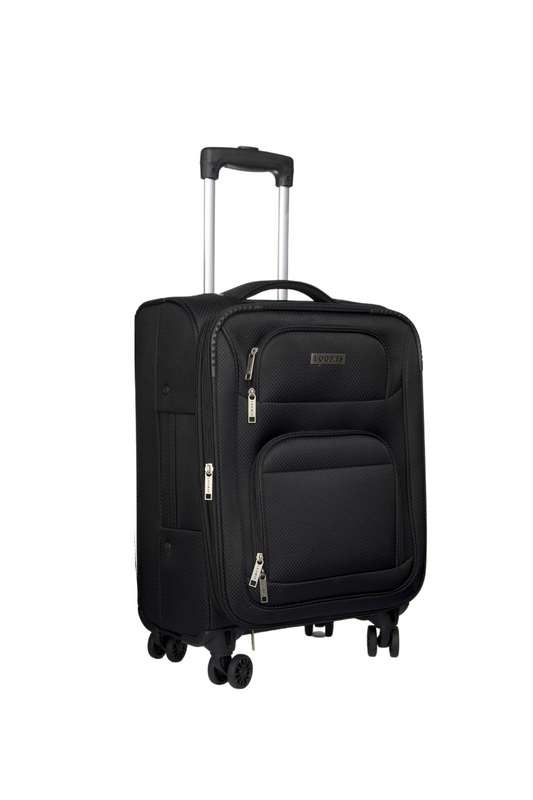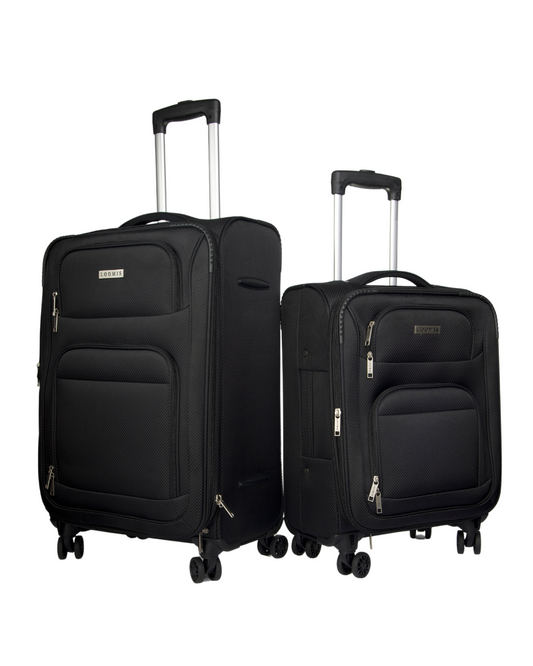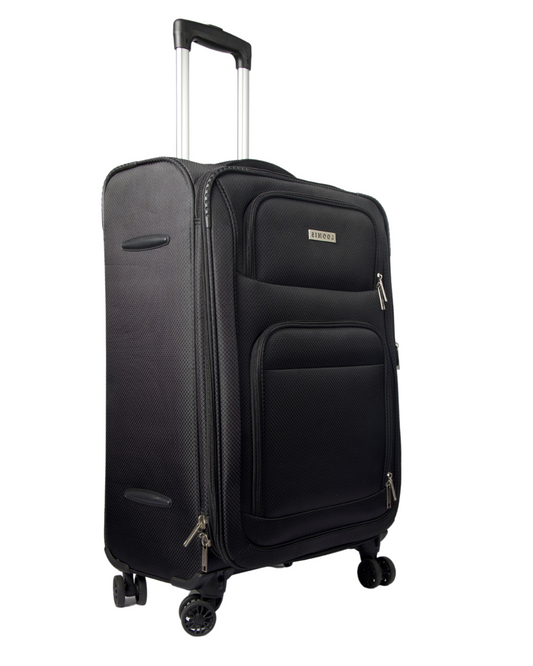Have you ever experienced anxiety while flying or have you chosen not to fly due to various fears? If so, you are not alone. Many people struggle with flight-related anxiety. There are several ways in which you can process such feelings and probably even overcome them. In this blog post, let's explore 17 tips to help reduce anxiety and stress when flying.
1. Uncover the Source of Your Fear
The first step in managing flight anxiety is to understand where it's coming from. Take a moment and reflect on the source of your fears and concerns about flying. Is it the fear of turbulence, the concern about safety, fear of heights. or something else? Identifying the real cause can help you address it more effectively.
2. Understanding Airplane Turbulence
Turbulence is a common source of anxiety for many flyers, but it's important to understand that it's a normal and safe part of air travel. Educate yourself on the science behind turbulence and how aircraft are designed to handle it. This can help alleviate your concerns and make the experience less stressful.
3. Understand Aircraft Safety Features
Familiarize yourself with the safety features of modern aircraft, such as the redundancy of systems, the strength of the airframe, and the extensive training of pilots. Knowing that you're traveling on a highly engineered and safe mode of transportation can provide a sense of reassurance.
4. Examine Aviation Incident History
While it's natural to be concerned about the possibility of an incident, it's important to put things into perspective. Look into the actual statistics and history of aviation safety, which demonstrate that flying is one of the safest modes of transportation.
5. Seek Support from Flight Crew
Don't hesitate to speak with the flight crew about your anxiety, they have seen and heard these stories over and over again. They are trained to assist passengers and can provide helpful information or strategies to help you feel more at ease.
6. Embark on Flight Education
Consider taking a flight education course or attending a seminar on aviation to gain a deeper understanding of the mechanics and processes involved in air travel. This can help demystify the experience and alleviate your concerns.
7. Strategically Select Your Seat
Choose a seat that you feel most comfortable with, such as one near the front of the aircraft or over the wing, where the motion is often less pronounced. If you are afraid of heights and end up at a window seat, you can pull down the window sash to close it during take off and landing.
8. Mentally Prepare for Your Journey
Take some time before your flight to visualize a smooth and successful journey. Imagine yourself feeling calm and relaxed throughout the entire experience. There is little to worry about and more to focus on on your upcoming journey.
9. Seek Professional Guidance
If your anxiety is severe or persistent and you find it hard to handle it by yourself, consider seeking the help of a health professional who specializes in anxiety disorders or phobias. They can provide personalized guidance and support to help you manage your fears.
10. Engage in Effective Distraction Techniques
Bring along activities or entertainment that can help you stay focused and distracted during the flight, such as books, magazines, podcasts, or movies. Most if not all international flights have an entertainment screen in front. Use this screen at take off and busy yourself with selecting a movie to watch for the next hour or so.
11. Utilize Grounding and Breathing Methods
Practice deep breathing exercises, mindfulness techniques, or grounding methods to help you stay present and calm during the flight.
12. Confront Your Fear Head-On
If you're able to, consider gradually exposing yourself to flying by taking short flights or using flight simulators. This can help you build confidence and overcome your fear over time.
13. Travel with a Trusted Companion
Having a supportive friend or family member accompany you on your flight can provide a sense of comfort and security.
14. Schedule Adequate Time for Travel
Avoid rushing to the airport or feeling pressed for time, as this can exacerbate anxiety. Give yourself plenty of time to get to the airport and go through the boarding process.
15. Prioritize Hydration and Healthy Habits
Stay hydrated, eat nutritious meals, and engage in light physical activity during your travels. These healthy habits can help manage stress and anxiety.
16. Stay Away from Caffeine Before a Flight
Avoid consuming caffeine before your flight, as it can increase feelings of anxiety and jitteriness. Opt for calming beverages like herbal tea or water instead.
17. Sleep as Much as Possible
Try to get a good night's sleep before your flight. Being well-rested can help you better manage any anxiety or stress that may arise during the journey.
If all the above does hot help, closider this next step
Using the 5-4-3-2-1 Technique to Manage Stress When Flying
When you find yourself overwhelmed by stress and anxiety during a flight, the 5-4-3-2-1 technique can be a simple yet powerful tool to help ground yourself and manage stress effectively. This technique works by engaging your senses to bring your focus to the present moment, rather than dwelling on worrying thoughts.
Here's how you can use the 5-4-3-2-1 technique when flying:
-
Acknowledge 5 things you can see: Look around you and identify five tangible objects within your immediate surroundings. Focus on their colors, shapes, and textures. For example, you might notice the pattern on the seat fabric or the shape of the overhead compartment.
-
Notice 4 things you can touch: Pay attention to the sensation of touch. Run your fingers along the armrest, feel the texture of your clothing, or touch the surface of your tray table. Engaging with physical sensations can help anchor you in the present moment.
-
Identify 3 things you can hear: Tune in to the sounds around you. Listen to the hum of the airplane engines, the chatter of fellow passengers, or the gentle rustle of the in-flight magazine. Focusing on auditory cues can shift your focus away from anxious thoughts.
-
Recognize 2 things you can smell: Take a moment to notice any scents in the air. It might be the aroma of the in-flight meal, the scent of coffee brewing, or the subtle fragrance of hand sanitizer. Bringing awareness to smells can help you connect with your environment.
-
Name 1 thing you can taste: If you have a drink or snack with you, take a mindful moment to savor its flavor. Whether it's a sip of water, a bite of a snack, or the lingering taste of a mint, focusing on taste can provide a brief moment of sensory grounding.
Is Flying Safer Than Driving?
When it comes to the safety of air travel versus driving, the statistics overwhelmingly show that flying is significantly safer than being on the road. Here are some key points to consider:
-
According to the National Safety Council, the lifetime odds of dying in a car accident are 1 in 107, while the lifetime odds of dying in a plane crash are just 1 in 9,821.
-
The Federal Aviation Administration (FAA) reports that the fatal accident rate for commercial aviation in the United States is approximately 0.07 per 1 million flights, making air travel one of the safest modes of transportation.
-
In contrast, the National Highway Traffic Safety Administration (NHTSA) estimates that there are around 36,000 fatal car accidents in the US each year, equating to over 100 deaths per day on American roads.
-
The stringent safety regulations, advanced technology, and highly trained professionals involved in air travel contribute to the significantly lower risk of fatal incidents compared to driving, which remains one of the most dangerous everyday activities.
What is the fear of flying called?
The "fear of flying", "fear of air travel" or "fear of being on an airplane" is commonly known as aerophobia. It refers to a range of anxieties and phobias related to air travel. It is also called aviophobia, aviatophobia, or pteromerhanophobia, and can range from mild nervousness to intense panic attacks. Some other phrases used to describe this condition include "fear of flying", "fear of air travel", and "fear of being on an airplane".
Remember, everyone's experience with flight anxiety is unique, and what works for one person may not work for another. Be patient with yourself and don't hesitate to try different strategies until you find what works best for you.
Why Support Us?
Our dedicated team of writers relies on the sales of the premium Loomis Travel luggage showcased below to sustain their livelihoods. When you purchase directly from our Atlanta-based manufacturer, you not only avoid retail markups but also ensure top-notch quality and affordability.






